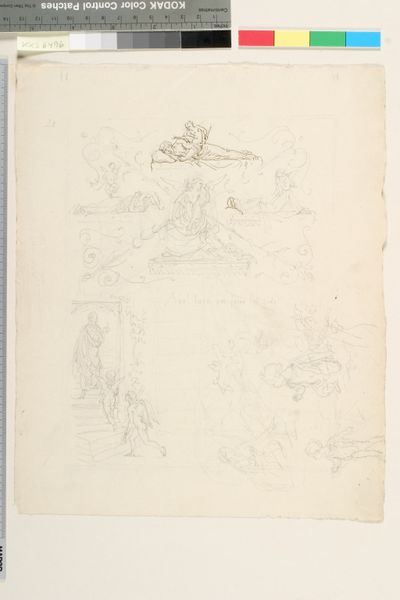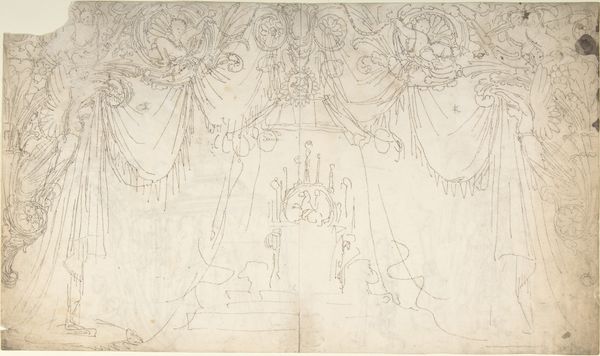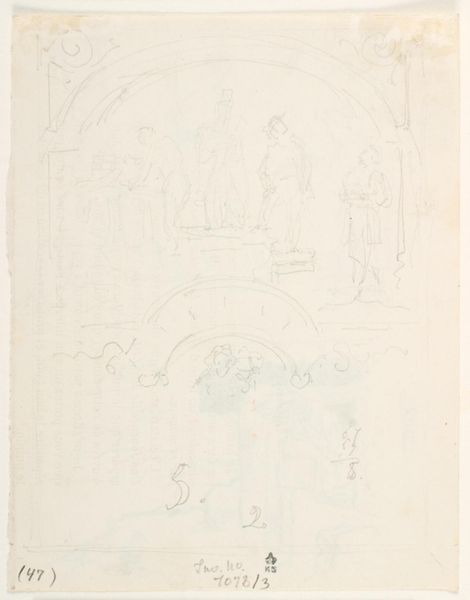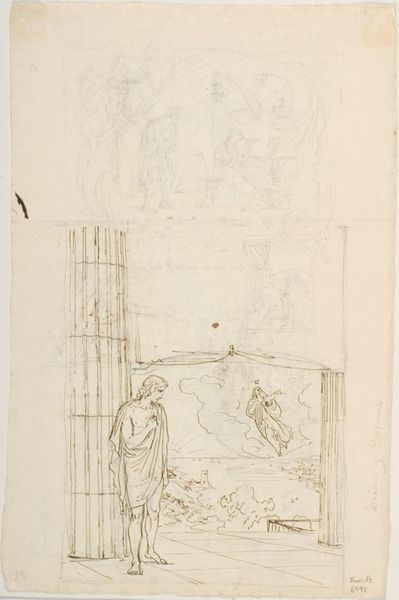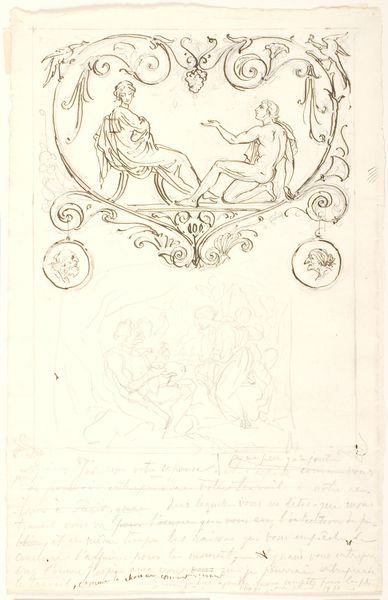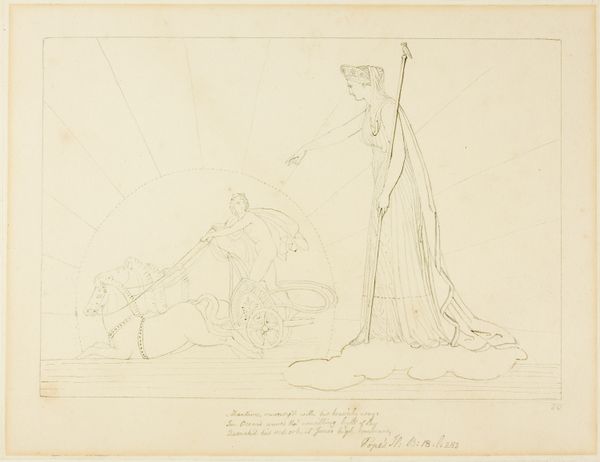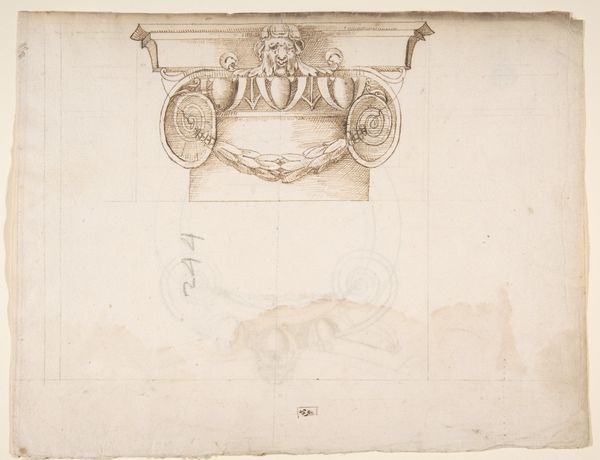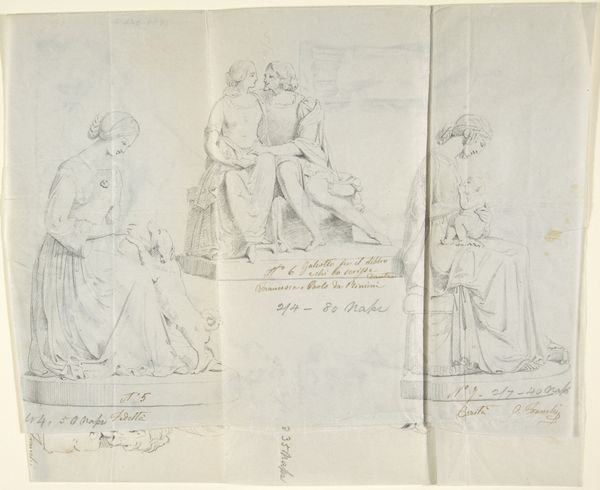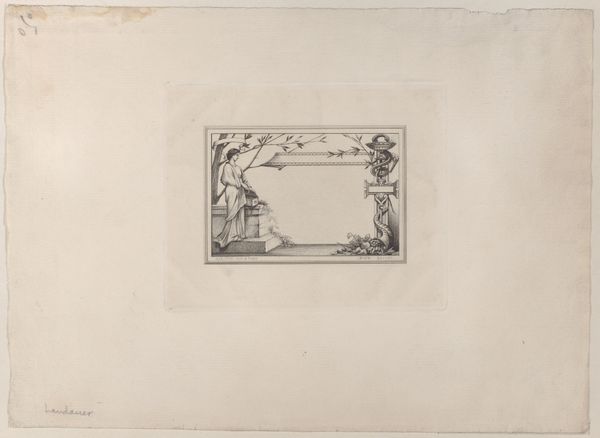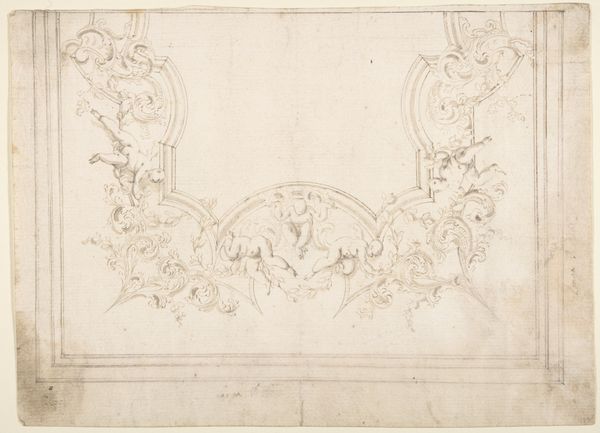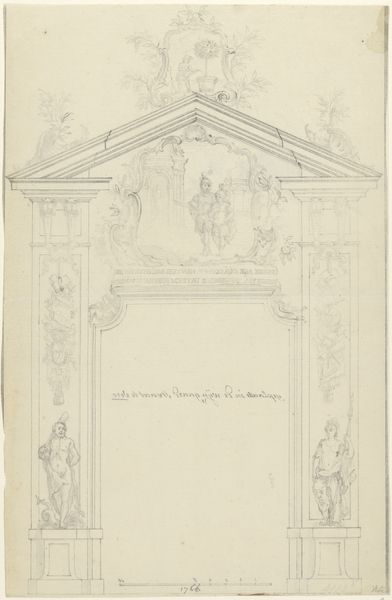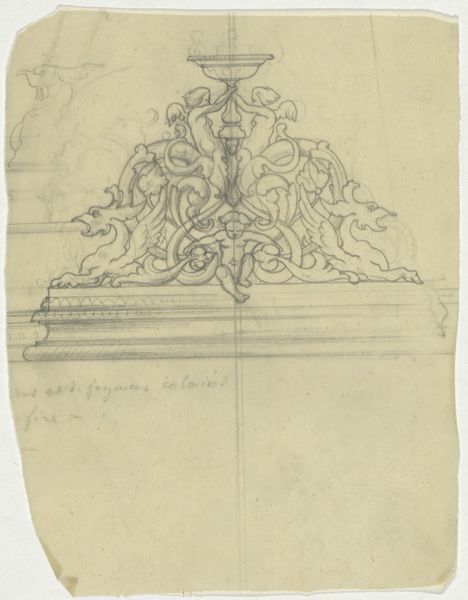
Design for a Sarcophagus with Two Mourning Figures 1845 - 1855
0:00
0:00
drawing, print, pencil
#
portrait
#
drawing
# print
#
landscape
#
figuration
#
pencil
#
academic-art
#
angel
Dimensions: sheet: 13 15/16 x 8 in. (35.4 x 20.3 cm)
Copyright: Public Domain
Editor: Here we have John Gibson's "Design for a Sarcophagus with Two Mourning Figures," created sometime between 1845 and 1855. It's a pencil drawing, almost like a blueprint. It’s fascinating to see the delicate lines depicting such a weighty theme. How does this piece sit within its historical context? Curator: It’s a window into the 19th-century culture of mourning and the public role of art in processing grief. Sarcophagi, traditionally associated with ancient civilizations, saw a resurgence in popularity, reflecting a broader interest in classical forms and a desire to imbue death with a sense of historical grandeur. Gibson, as a successful expatriate sculptor, operated within a specific patronage system and artistic milieu that prized neoclassicism. The museum space itself reinforces that narrative now, doesn't it? Editor: Absolutely, I noticed the winged hourglass too! Does that symbol have a place in understanding the artist's intention, and maybe society's beliefs about death at the time? Curator: Exactly. The hourglass, flanked by wings, is a clear memento mori – a reminder of the fleeting nature of time and the inevitability of death. It underscores the prevalent Victorian fascination with mortality, fueled by high death rates and elaborate mourning rituals. Consider how Gibson is presenting a very public-facing vision of bereavement; that representation would need to appease and be legible to specific audiences within the political climate of the time. Do you see this drawing as challenging or upholding those visual and social expectations? Editor: I hadn’t thought about it that way. I guess it leans more toward upholding the norms, especially given the idealized figures. It makes me wonder about who this sarcophagus was intended for. Curator: That's the critical question. Exploring the intended audience and the socio-political statement embedded within this design offers deeper insight into the cultural landscape of the time and the enduring power of art to shape our understanding of mortality. Editor: This was a great exercise to consider the social narratives behind a seemingly simple design. Thank you for the fascinating historical context.
Comments
No comments
Be the first to comment and join the conversation on the ultimate creative platform.
